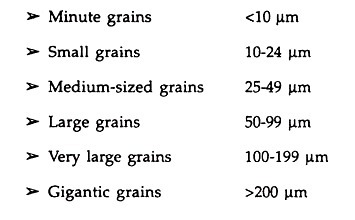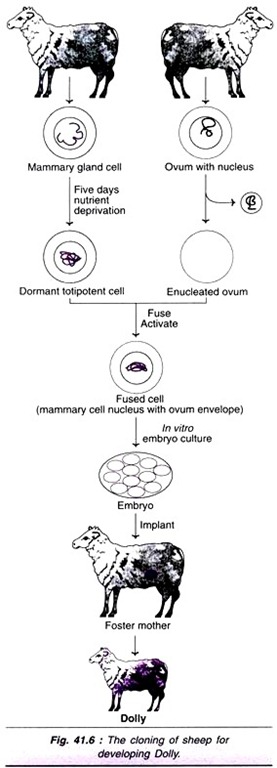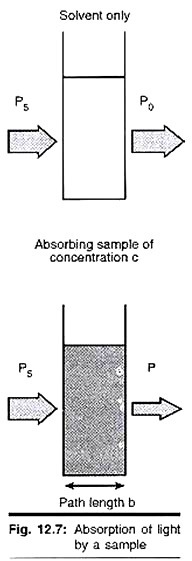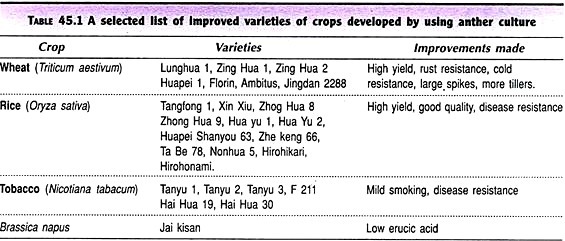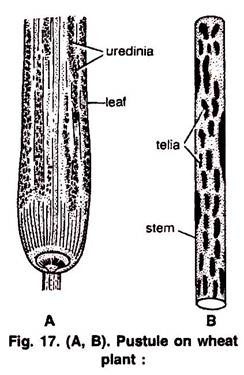Traditional medicine still meets the requirements of the people in the developing world.
Following the Alma Ata declaration of 1978, efficient strategies have been adopted by many countries for integrating the traditional health practices into the national health systems. India is no exception to this.
The country has by now developed a parallel stream of Indian medicine alongside the modern medical system as constituted by allopathy.
However, the policies adopted for promotion of the Indian systems of medicine do not cover the traditional health practices of the local communities, which fall outside the realm of the classical medical systems like Ayurveda, Siddha, Unani and naturopathy.
The Local Health Traditions (henceforth referred as LHT) which are nothing but the traditional health practices of the local communities making use of locally available herbs, have from time immemorial provided innumerable health care options as preventives and curatives and has thus played an important role in enhancing the health of the local populations.
LHT are the oral traditions practiced by the local people, who by trial and error selected many plants from their habitat to treat the ailments confronted by them.
LHT as referred to in the study is devoid of any personalistic or supernatural beliefs and confines to the natural beliefs.
According to Aregbeyen (1996) there is growing evidence that:
i. Herbal medicine is effective and acceptable and that:
ii. There is every reason to promote knowledge and understanding of which type of herb must be used for treating which ailment in the various communities.
iii. He suggests that, if properly developed, herbal medicine could be used to supplement PHC, and in promoting a spirit of self-reliance.
However, the LHT have moved into oblivion, with increasing access to modern medicine especially in Kerala, the state lying along the south-west coast of India. It might seem paradoxical that Kerala blessed with rich herbal wealth, which has stepped into sectors like health care tourism, has experienced a tremendous decline in the population employing LHT to meet the health requirements.
The excessive commercialization of the health sector is one major reason for the current health seeking pattern. The commercialization has also made health care unaffordable to the majority of the people. Ayurveda, the classical medicine and allopathy, the modern medicine are increasingly becoming unaffordable with increasing price of medicines (Ekbal, 2000).
This coupled with the excessive privatization of the health sector and the deterioration state of the public health facilities, is pushing the rural population further into the vicious poverty trap. The current research paper, therefore, looks into the reason for the popularity of particular medical systems and the viability of promoting LHT alongside the dominant systems of medicine.
Geo-informatics has by now been used for mapping biodiversity and efficient management of the various natural resources. The herbal wealth which forms the valuable resource base for the LHT can be mapped in their habitats with the help of the local knowledge.
The objectives of the study are therefore:
i. To assess and evaluate the relationship existing between the choice of a medical system and the physical and socio-cultural space.
ii. To evaluate the significance of ignorance of the local health traditions and non-availability of the resources and associated practitioners as influencing the limited use of the local health traditions.
iii. To assess the possibilities of employing geo-informatics in the promoting the use of the local health traditions at the local level and thereby providing affordable health care options at the finger tips of the lay people.
Contents
The Study Area:
The study is carried out in the Kanjoor panchayat of the Ernakulam district of Kerala (Map 1). The village is bound on the east and south by the Periyar River. Lying along the flood plains of the largest river in Kerala, the region is blessed with fertile alluvium supporting all forms of agriculture. The village also has a well divined canal system belonging to the Kodanad-Edanad canal system.
Toward the north the region has vast areas under paddy cultivation. However, the region is covered with nutmeg plantations and other crops making it a rich agricultural zone. However, tremendous land use change are taking place with more agricultural and virgin lands getting converted into residential areas, threatening the herbal population in the area.
The Kanjoor panchayat occupies an area of 14.32 sq. km and has 4,885 households. The total population of the panchayat as per the 2001 census is 21,651 of which 10,624 are males and 11,027 are females. Of the total population of 21,651 the working population is 7,793. Of this 5,858 are men and 1,935 are women. The total work participation rate therefore is 35.9 per cent. The male work participation rate is 55.1 per cent and the female work participation rate is 17.5 per cent.
The panchayat is well served by educational, financial and health institutions (Map 2). There is one government PHC (Primary Health Center) (modern medicine) having one doctor and one private hospital with 40 beds and four doctors. The doctor at the PHC in Puthiyedam locality of Kanjoor, visits the health centre at Thuravankara, a remote locality in the panchayat, once every month.
The remoteness of Thuravankara is attributed to the absence of public transport facilities. Though, the people of Thuravankara want better access to the PHC, the non-availability of transport facilities has limited their access. There are two private clinics having one doctor each, functioning in the panchayat.
There is a Government Ayurvedic dispensary with an Ayurvedic doctor and an Ayurvedic Research Centre functioning in Kanjoor, apart from a number of Ayurvedic pharmacies. There are three homeopathic clinics besides four traditional health providers who practise Ayurveda in the panchayat, though the exact number is not known.
The Methodology:
The methodology employed consists of a few participatory, qualitative and quantitative tools apart from the cartographic tools employed. The participatory techniques were employed to enhance the quality of information and to have a wider perspective on the key issues addressed. The participatory techniques helped to ensure the participation of the stakeholders who directly influence or are influenced by the use and access to local health traditions.
PRA has been described as family of approaches, behaviours and methods for enabling people to do their own appraisal, analysis and planning, take their own action, and do their own monitoring and evaluation. For the current research paper, data collected using historical profiling has been widely employed.
Historical profiling is a participatory tool which helps to delve deep into the historical basis of the current socio-environmental set-up of the study area and ensures a better understanding of the major social and environmental changes and their effects on the local economy, environment and society (Bolt and Fonseca, 2001).
Qualitative techniques like key-informant interviews and focus group were used to collect information from the people. Quantitative methods, in particular experimental designs concentrate on the control of extraneous variables while qualitative methods are holistic (Morse and Chung, 2003).
However, the information derived from qualitative and participatory techniques are not quantifiable and are just a wealth of ideas and information which would have never crossed the minds of the researcher employing quantitative tools alone. A questionnaire survey (for 245 households) was used to collect quantitative information which helped to quantify the information gathered during the participatory and qualitative appraisals.
This was important to perform analysis and to obtain a clear picture of the relationship existing between the ignorance of LHT, non availability of traditional practitioners and natural resources to the use and disuse of LHT.
The Results and Discussions:
The study reaffirmed that modern medicine remains popular among other systems of medicine (Kunhikannan and Arvindam 2000). Of the total 245 households, majority preferred modern medical system when compared to other systems. And the preference for local health traditions were limited (Figure 1).
One hundred and five households preferred modern medicine solely for health care; while in 36 households Ayurveda was the most preferred medical system. In a significant number of households, more than one system of medicine was preferred.
The preference for modern medicine increased during a time frame of fifty to hundred years and cannot be treated lightly. The time lines created by the villagers during the participatory workshops shows that there was a high scale dependence on LHT in the past (before 50 years) and modern medicine was rarely employed since it was inaccessible to majority of the population at that time and people were more knowledgeable about the LHT.
But the situation changed tremendously over the years, with modern medicine becoming accessible to the laymen and also popular due to the quick relief it offers to the symptoms of illnesses. The local health traditions gradually moved into oblivion with very few opting for them due to dwindling natural resources and reduced interest in the traditional knowledge.
This coupled with the government strategy which gave more importance to modern medicine and sidelined all forms of traditional medicine led to the gradual decline of LHT. The choice of the medical system is a function of the socio-cultural and physical realities as existing in the neighbourhood.
The findings of the historical profiling exercise showed that:
i. There is tremendous change in the economic, socio-cultural and environmental situation as existing in Kanjoor, like other parts of the state;
ii. The land reforms helped to erase the caste differences though the class differences still remain;
iii. Infrastructure has improved and modern health care facilities have become more accessible in terms of distance, but still remain inaccessible to the lay people in terms of cost;
iv. Environmental changes are evident from the increasing pressure on land and the resultant land use changes from primary land uses to secondary land uses;
v. The changed socio-climate has influenced the mindset of the people seeking efficient and quality health care, thus leading to a boom of private health care sector;
vi. The socio-cultural changes have led to a situation where the local health traditions are fast eroding, due to its unscientific nature and ignorance of these traditions; and
vii. The resource base also is threatened by the higher pressure and a consequent loss of herbal wealth.
These facts about the changed physical and socio-cultural space explain the current choice of modern medicine as the most preferred medical system by the people.
The realities which have led to the diminishing use of the LHT are manifold, many of which were highlighted in the discussions above. Of the manifold problems, leading to disuse of LHT, ignorance of LHT, non-availability of qualified traditional practitioners and resource scarcity were identified to be the key issues which need immediate reprisal.
Ignorance of the LHT:
“The rate of knowledge erosion is faster than the rate of resource erosion” (Unnikrishan, 2004). Most people are unaware of the uses of even the most commonly available herbs in their neighbourhood. Being oral traditions, the knowledge of local health traditions cannot be retrieved once it is lost.
The current situation points towards the need for an initiative to codify this knowledge base at the earliest. Creation of inventories is possible only through the active participation of the community and the traditional medicine men. Also care needs to be taken to serve the needs of the community and the traditional medicine men.
Ignorance as a factor controlling the use and access to the LHT is brought out clearly in the survey. Nearly 51 per cent of the households felt that ignorance of the LHT was the major constraint in limiting their use. Another 9.1 per cent felt that it is moderately important and 12.3 per cent felt it is important. The remaining 37.6 per cent felt that it is not a significant reason for the decline of the LHT (Figure 2).
Non-Availability of Qualified Practitioners:
The survey pointed out that non-availability of qualified traditional practitioners has led to a tremendous decline in the use of local health traditions. Thirty-seven per cent of the people who responded found non-availability of traditional medical practitioners as a very important reason, 14.2 per cent as important and 13.3 per cent as moderately important reason for the decline of the LHT (Figure 3).
In the words of a woman who attended the Participatory Rapid Appraisal (PRA) at Aryankavu, a neighbourhood in Kanjoor:
During early days, when I was a child, we knew many traditional practitioners, who used to provide specialized treatments for may illnesses including migraine. But now, it is difficult to locate many practitioners who used to provide effective cures for illnesses for which medicines are not available in modern medicine. Many of them have died without having passed the information to the future generations, and the knowledge which was passed down by their ancestors has died out with them.
The non-availability of practitioners has resulted from:
i. The governmental policies which fails to give due recognition to traditional practitioners and often hindering their practice;
ii. The categorization of traditional medicine as unscientific; and
iii. Reluctance to share the knowledge resources with others.
Though of late the government has shown interest in reviving traditional knowledge systems, there is a need for taking conservation measures on war footing (George et al., 2002). The declining number of qualified practitioners shows that there is an urgent need to conserve the knowledge bases, which might otherwise be lost with another passing generation.
In Kanjoor, there are four families who still practice traditional medicine. But at the same time the members of the younger generation of these families are quite unaware and show little interest to these valuable traditional knowledge bases.
A significant reason for this being the declining interest and the declining number of people, who approach a traditional medicine man. Also their contributions are seldom given due recognition by the community.
During an interview with one of the traditional medicine men in the panchayat, he expressed his deepest fears on the existing situation where none of his children or grandchildren possess any amount of knowledge which his ancestors had passed down to him. Still he is optimistic that he could find someone who will be interested in this traditional knowledge in his own family.
He says that:
Though I am worried that none of my children knows about this valuable knowledge, especially the panaceas, I feel that there will be someone who will be interested among my grandchildren to whom I can pass this on. However I have documented the traditional knowledge I possess and they may use it in future. But I do not know how useful it will be unless you know to diagnose diseases. Many people have come to me to learn but I haven’t taught any of them due to time constraint.
Scarcity of Resources:
Closely associated with the above two factors is the scarcity of resources in terms of herbs which are widely used in the practice of LHT. The tremendous changes in land use and land cover have led to tremendous loss of herbal wealth. The high scale development coupled with ignorance of these herbal resources has led to deterioration of the herbal wealth which once formed the basis of country medicine and home remedies.
Many households reported that scarcity of herbal resources and difficulty to locate them has led to reduced use of LHT.
Of the total respondent, 45.9 per cent rated resources scarcity as a very important reason for the decline in use of the LHT, whereas 14.2 per cent of the population rated it as moderately important and another 14.2 per cent as important factor influencing the reduced use of LHT. A total of 24.7 per cent however rated it as slightly or not at all important (Figure 4). According to them the disuse of LHT is primarily due to ignorance and unwillingness to use the LHT.
These results emphasize the need for generation awareness on the use of particular herbs found in their neighbourhood to enhance their use by community groups. This can possibly be achieved by actively involving the community in the process for reviving LHT.
The steps which will help towards attaining this end include:
i. Preparation of inventories similar to the Peoples Biodiversity Registers’, for LHT and resources supporting LHT and their spatial distribution within a village;
ii. Making the community aware of the importance of using LHT and the need for conserving the resources used in LHT;
iii. Providing options for affordable health care by complementing modern medicine with LHT; and
iv. Calling for strict legislation to revive the LHT, as a step towards providing affordable and sustainable health care.
The Role of Geomatics (Figure 5):
The role of geomatics in the process of reviving the LHT starts with the basic mapping of the various herbal habitats and their spatial distribution within the village. Moving a step forward, the herbal resources can be mapped at ward levels and also the changes which have drastically affected the herbal population in the neighbourhood. Further the uses of the particular herbs found in the various localities in the panchayat can be integrated into the base map.
This procedure however, calls for active participation of the community members in the various localities, with support from the local and state governing bodies. Also the community needs to be trained in identifying the herbs which need technical assistance from members of the scientific community.
Also the maps developed can be used by the community for a better understanding of the problems associated with the herbal wealth in the panchayat and to adopt planning strategies to best address the problems.
Thus geomatics will serve three ends:
i. Creation of an information system for the herbal habitats and the uses of the herbs in LHT;
ii. Identification of vulnerable ecosystems and the reasons for vulnerability; and
iii. Providing spatial solutions for the problems identified.
The creation of an information system at the local level will help the community to identify the herbs available in their neighbourhood and will help the people to access these resources when they need it. Also a periodic appraisal will help them to know about the resource erosion rate and the subsequent conservation measures to be adopted. The application of a herbal information system at the community level will help to mainstream the cause of LHT and their conservation.
